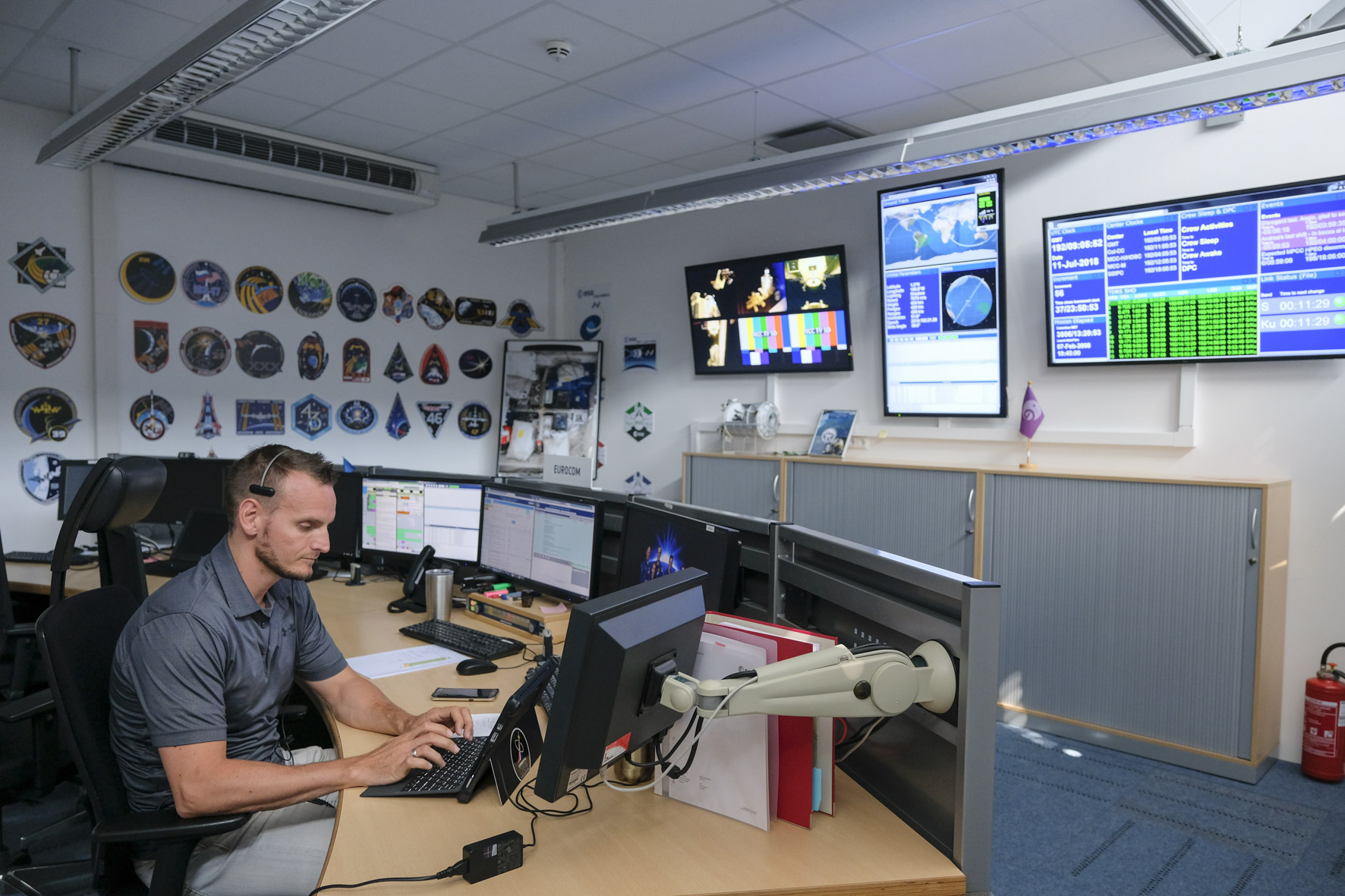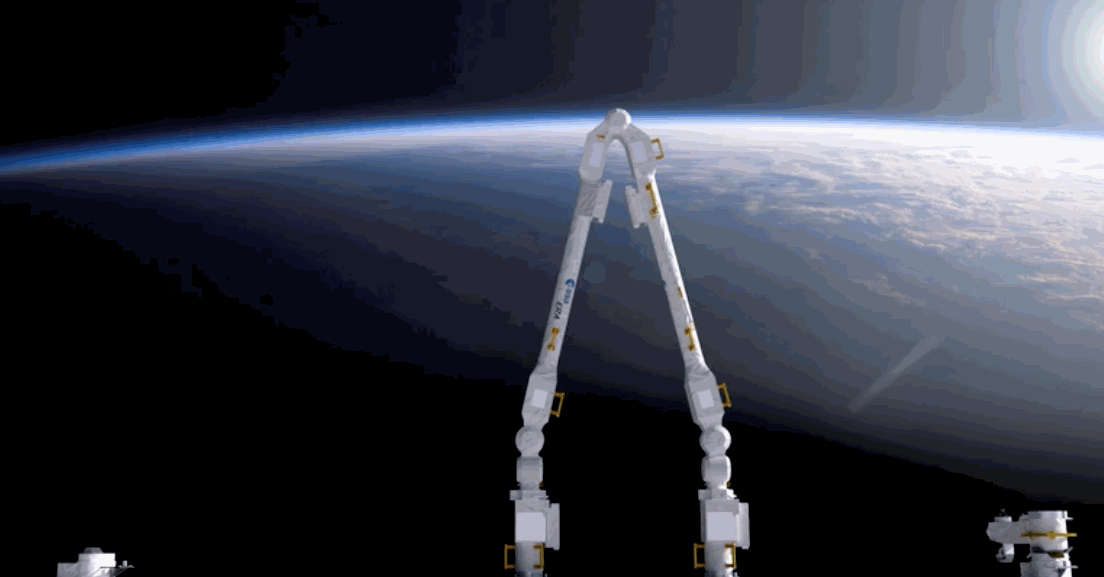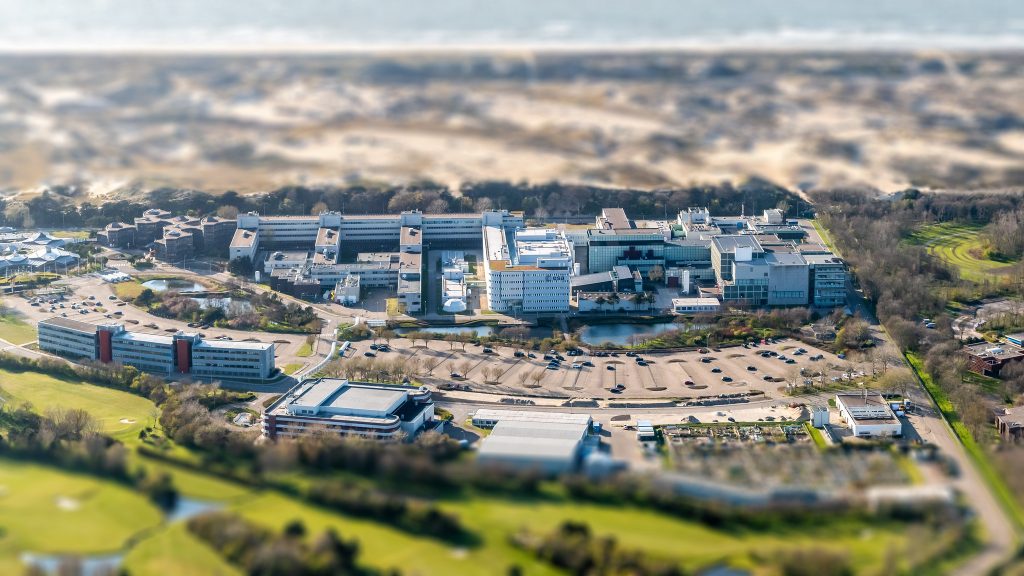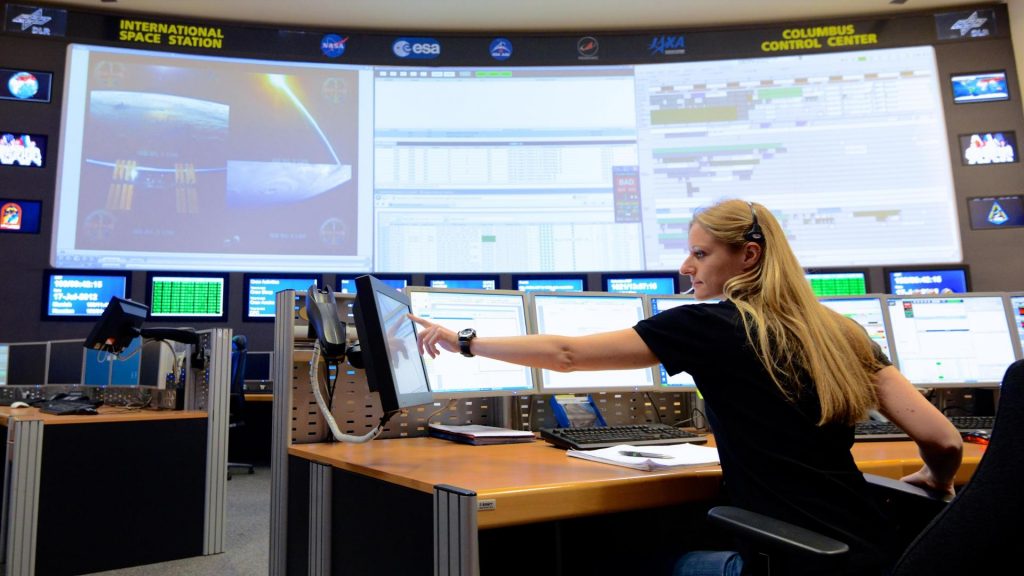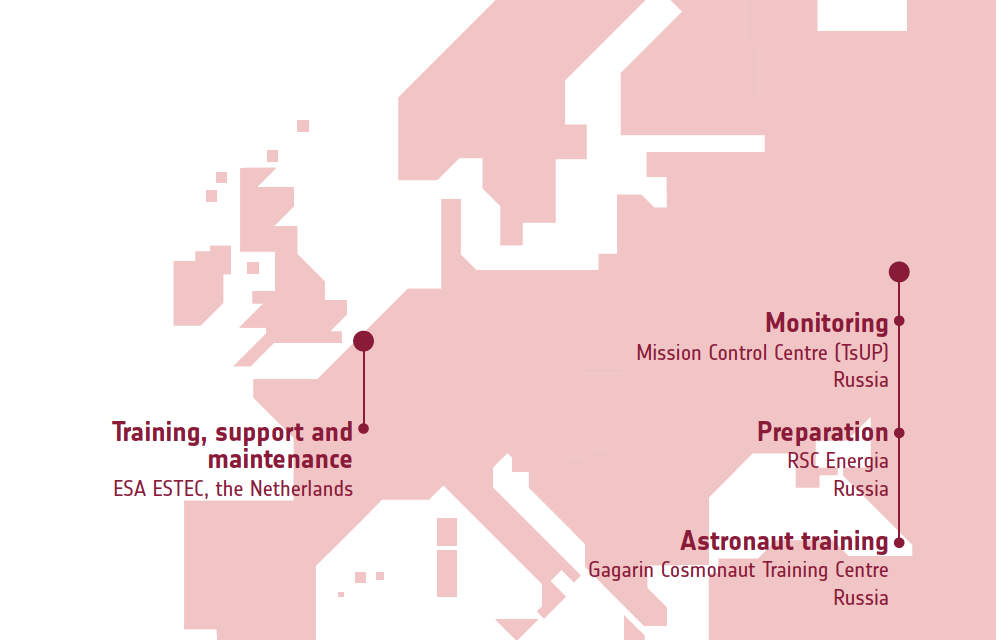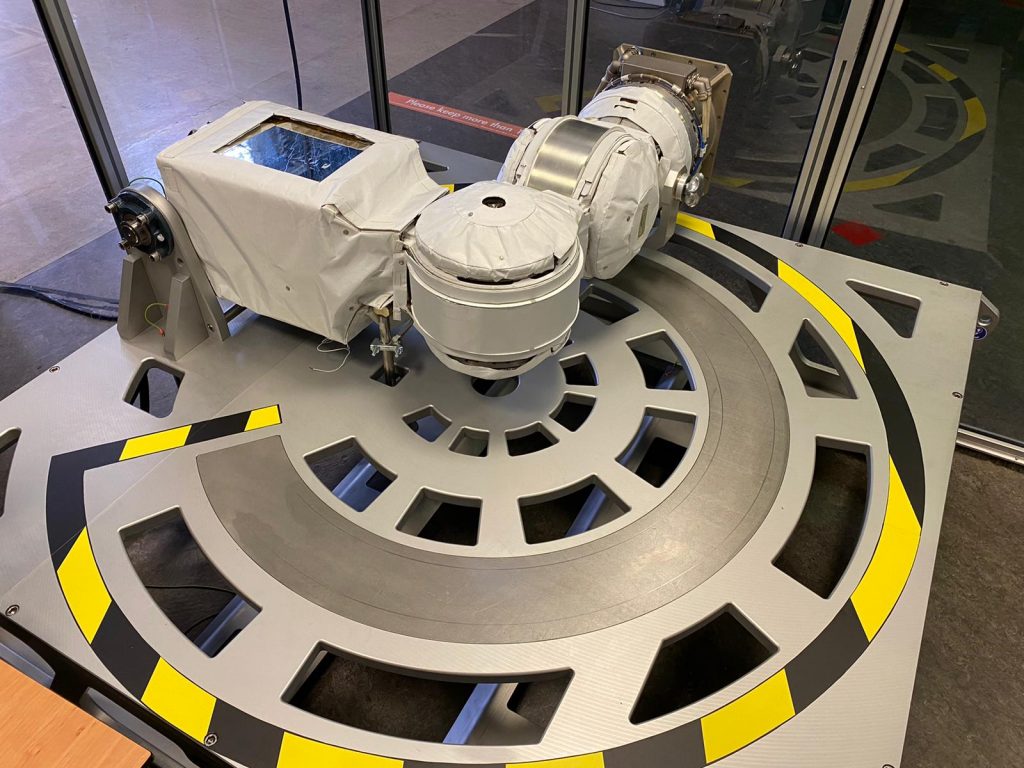When it comes to operating an 11-m-long robot in space, reliable communications are crucial.
“You don’t want any blackout or unstable links between the human and the robot, the Earth and space,” says Stephen Ennis, an ESA engineer for ground segment systems.
“What you want is two worlds talking to each other securely,” he adds.
There is one centre that does precisely that for the European Robotic Arm (ERA), the latest robot to become a flexible fixture for the International Space Station. The ERA Support Centre is located at the Erasmus Support Facility in ESTEC, the technical heart of ESA in Noordwijk, the Netherlands. And it is getting ready for its imminent launch on 21 July 2021.
A control room on the Dutch coast hosts teams that work with European technology and experiments bound for the Space Station and the Moon.
Interconnected
This multipurpose hub provides a fundamental platform to talk – and listen – to the robotic arm. It can receive telemetry, voice and video with encrypted data links, but there are several layers to it.
While telemetry critical to operating the arm comes in from the Mission Control Centre (TsUP) in Moscow, voice and video flow through the Columbus Control Centre (Col-CC) in Munich, Germany. There, the ERA team must also work in close coordination with European operations for the Space Station.
How it works
Like many large organisations outside the space industry, these centres work with multiple providers with the right interfaces to provide a reliable backbone network.
“Public internet connections do not have a security guarantee. Many things can go wrong,” reminds Stephen. ERA has a dedicated connection, part of the broader International Space Station operations.
“We rely on this backbone network as the fundamental foundation for all the operations we run with the Space Station,” he explains. With security in mind, the team has in place several layers of protection and runs regular tests and backups for redundancy.
Complexity
Security also leads to barriers. Every country, every team has different requirements, protocols and languages. For the ERA team to focus on the business of space robotics, engineers need to work across borders with international partners.
“In today’s interconnected world this may seem like a simple task, but in reality it is often tricky and requires a big effort to ensure reliable communications,” says Kevin Pasay, manager of the Erasmus Support Facility.
“When you talk about operations for the International Space Station, things go to the next level. We often have to be creative to find solutions and get clearance from the governments involved,” he adds.
A piece of the robot arm on Earth
If you were to take a tour through the Eramus building, you may spot another interesting feature – an airlock just a few paces from the control room. A former clean room is hosting the ‘ERA Iron Bird’, a replica of the elbow the robot arm uses to move around the Space Station.
You can also see other models, like the ERA’s control panel that astronauts will use to operate the arm during spacewalks. The size of a briefcase, the panel has been specially designed to withstand the harsh space environment and allow astronauts to control ERA even with the gloved hands of a spacesuit.
“Even a quick glimpse at the hardware reveals how much technical precision is required to operate the hardware of this formidable arm,” says Kevin.
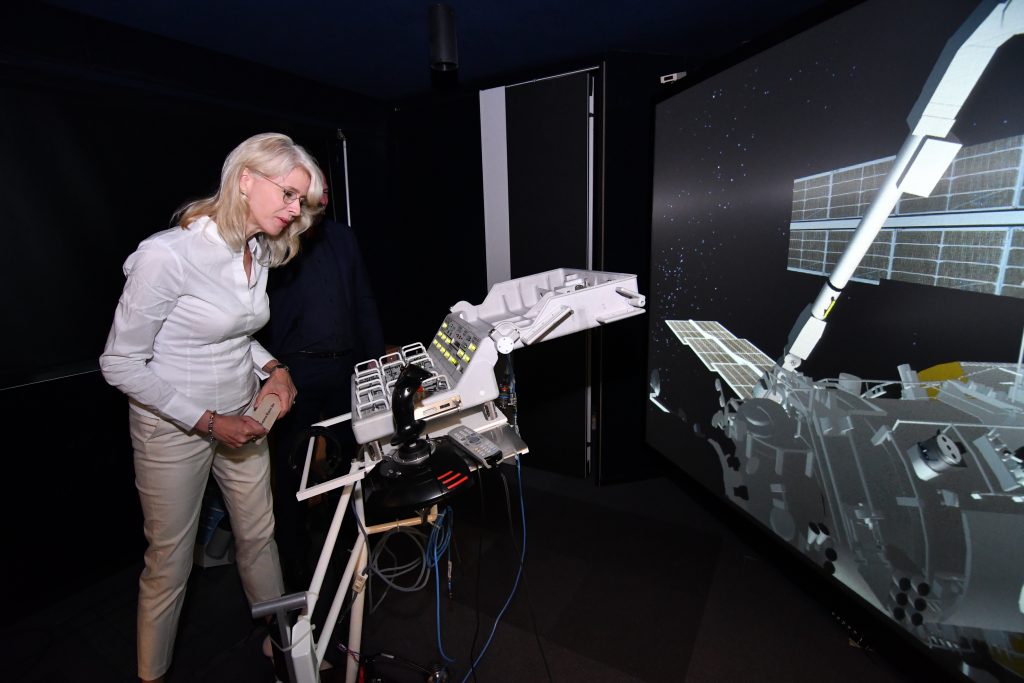
A glance at the control panel in ESTEC, ESA’s technical heart in the Netherlands. Credits: ESA-A. Conigli
ERA is 100% made-in-Europe. A consortium of European companies led by Airbus Defence and Space Netherlands designed and assembled it for ESA. Its journey from Europe to space is a tale of precision and teamwork, of international partnership and perseverance.
Note: The first six months of ERA operations will be handled from the ESA Moscow Support Room in TsUP.


